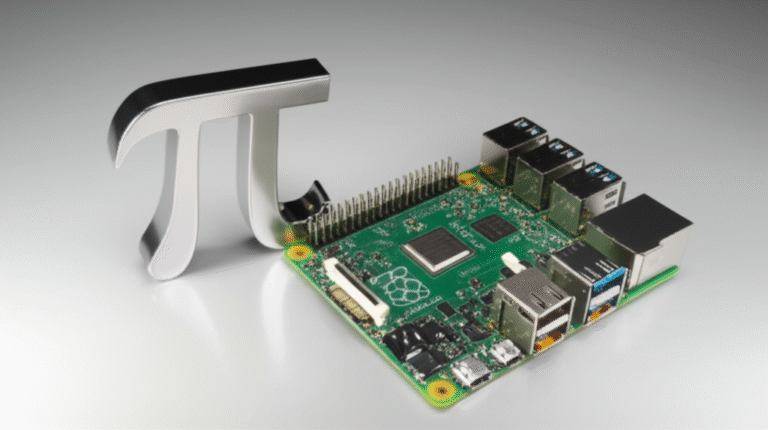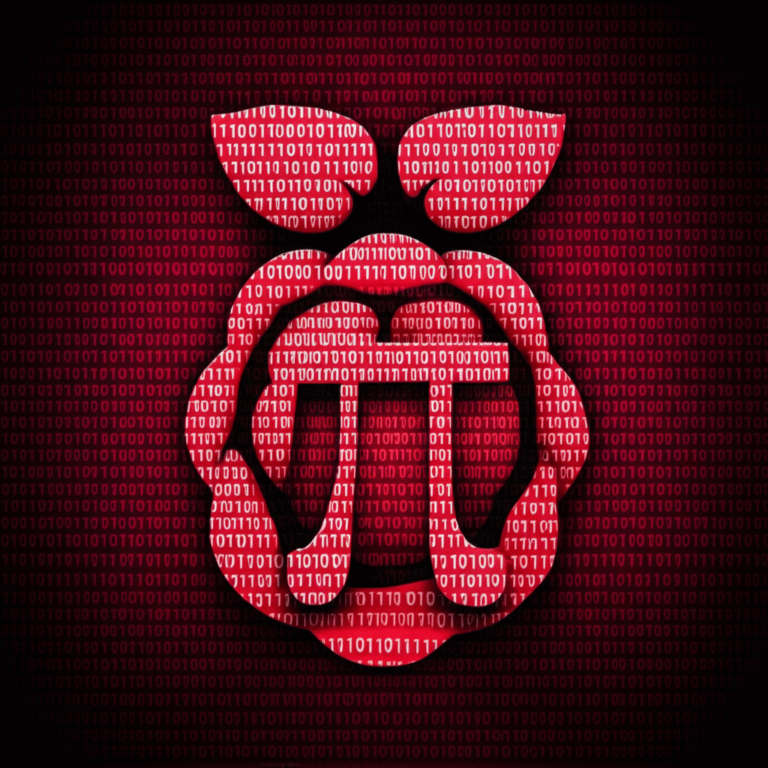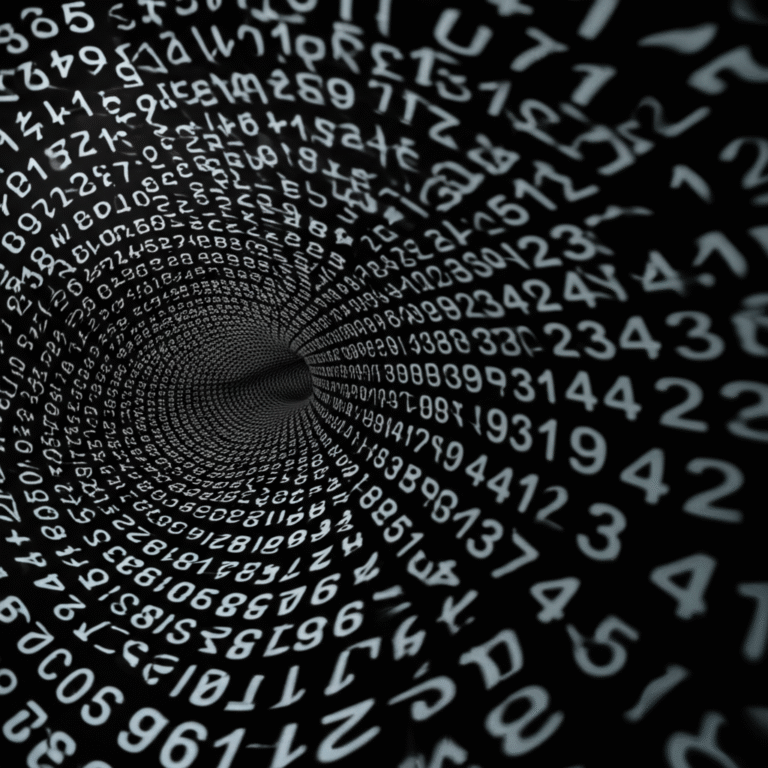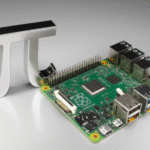Support our educational content for free when you purchase through links on our site. Learn more
What Is the Highest Decimal of Pi? Mind-Blowing Record in 2025! 🔢
Imagine trying to count every grain of sand on a beach — now multiply that by a million, and you’re still nowhere near the number of decimal places of pi that have been calculated! As of 2025, mathematicians and tech enthusiasts have pushed the boundaries of pi’s infinite mystery to an astonishing 300 trillion digits. But why go so far? And how do they even do it?
In this article, we unravel the epic saga behind pi’s decimal expansion — from ancient approximations to today’s supercomputer-fueled records. We’ll explore the algorithms powering these feats, the human champions memorizing thousands of digits, and the mind-bending challenges of computing pi at such an extreme scale. Ready to discover the highest decimal of pi ever calculated and why it matters? Let’s dive in!
Key Takeaways
- The current record for pi’s decimal expansion is 300 trillion digits, set in April 2025 by Linus Media Group and Kioxia using advanced SSD storage and cloud computing.
- Pi’s digits are infinite, non-repeating, and believed to be statistically random, though this remains unproven.
- Powerful algorithms like the Chudnovsky formula and the BBP formula enable rapid and precise calculation of pi’s digits.
- Memorizing pi digits is a human feat too — the Guinness World Record stands at 70,000 digits memorized!
- Raspberry Pi devices can calculate thousands of digits, making them perfect for educational projects, though not for extreme computations.
- Calculating pi to trillions of digits helps stress-test supercomputers, advance numerical methods, and fuel mathematical curiosity.
👉 Shop high-performance SSDs and Raspberry Pi kits to start your own pi-inspired computing projects:
- Kioxia SSDs: Amazon | Kioxia Official Website
- Raspberry Pi 4 Model B: Amazon | Raspberry Pi Official Website
Table of Contents
- ⚡️ Quick Tips and Facts About Pi’s Digits
- 🕰️ The Epic Quest for Pi: A Historical Journey Through Its Decimal Expansion
- Ancient Wisdom: Early Approximations of Pi’s Value
- The Dawn of Infinite Series: Pi’s Precision in the Age of Calculus (1400s – Mid-20th Century)
- The Digital Revolution: Computers Unleash Pi’s Billions of Digits (Mid-20th Century – Early 2000s)
- The Exascale Era: Trillions and Beyond – Modern Pi Computation (2000s – Present)
- 🤯 So, What IS the Highest Decimal of Pi Ever Calculated?
- 🤔 Why Bother? The Unseen Value of Computing Pi to Trillions of Digits
- 💻 How Do We Calculate Pi to Such Mind-Boggling Precision? The Algorithms Behind the Digits
- 🏆 The Current World Record Holder for Pi’s Decimal Expansion
- 🧠 Memory Masters: The Incredible Feat of Memorizing Pi’s Digits
- ♾️ The Nature of Pi: Is It Truly Infinite and Random?
- 🚧 The Challenges and Limitations of Extreme Pi Computation
- 🚀 The Future of Pi Computation: Where Do We Go From Here?
- ✅ Conclusion: Pi – More Than Just a Number
- 🔗 Recommended Links for Pi Enthusiasts
- ❓ FAQ: Your Burning Questions About Pi’s Decimals Answered
- 📚 Reference Links
⚡️ Quick Tips and Facts About Pi’s Digits
Welcome to the fascinating world of pi decimals! Here’s a quick cheat sheet from the educators and engineers at Why Pi™ to get you started:
- Pi (π) is an irrational and transcendental number, meaning its decimal expansion never ends and never settles into a repeating pattern.
- The current world record for computing pi’s digits stands at a staggering 300 trillion decimal places (as of April 2025).
- Memorizing digits? The Guinness World Record is held by Rajveer Meena, who memorized 70,000 digits!
- Pi’s digits are used for stress-testing supercomputers, advancing numerical methods, and pure mathematical curiosity.
- Algorithms like the Chudnovsky formula and BBP formula are the engines behind these massive calculations.
- Pi’s digits are believed to be “normal”, meaning every digit from 0-9 appears with equal frequency in the long run, but this is still unproven.
Want to dive deeper? Buckle up! We’re about to explore the epic saga of pi’s decimals, from ancient scribbles to modern supercomputers.
For more on microcontroller programming and DIY electronics that can help you explore math and computing, check out our Microcontroller Programming and DIY Electronics categories.
🕰️ The Epic Quest for Pi: A Historical Journey Through Its Decimal Expansion
Pi’s decimal journey is one for the ages — a story of human curiosity, ingenuity, and relentless pursuit of precision. Let’s walk through the milestones.
Ancient Wisdom: Early Approximations of Pi’s Value
Long before computers, civilizations tried to pin down pi’s value:
- Ancient Egyptians (~2000 BC): Used 3.1605 (approximate to 1 decimal place).
- Babylonians (~2000 BC): Approximated pi as 3.125.
- Archimedes (c. 250 BC): Used polygons to estimate pi between 3.1408 and 3.1429, accurate to 2 decimal places.
- Zu Chongzhi (AD 480): Achieved 3.1415926 (7 decimal places), an astonishing feat for the time.
These early efforts laid the groundwork for centuries of refinement.
The Dawn of Infinite Series: Pi’s Precision in the Age of Calculus (1400s – Mid-20th Century)
With the rise of calculus and infinite series, pi’s decimals exploded:
- Madhava of Sangamagrama (1400): Calculated 10 decimal places using infinite series.
- John Machin (1706): Developed Machin-like formulas, enabling 100 decimal places.
- William Shanks (1853): Claimed 707 digits but was later found to have errors after 527 digits.
This era marked the transition from manual calculations to formula-driven precision.
The Digital Revolution: Computers Unleash Pi’s Billions of Digits (Mid-20th Century – Early 2000s)
The computer age supercharged pi calculations:
- ENIAC (1949): First computer to calculate over 2,000 digits.
- IBM 7090 (1961): Achieved 100,000 digits.
- Yasumasa Kanada (1980s–2000s): Pushed records into billions of digits using supercomputers and optimized algorithms.
Computers made what was once impossible, routine.
The Exascale Era: Trillions and Beyond – Modern Pi Computation (2000s – Present)
Today, pi’s decimals are counted in the trillions:
- Emma Haruka Iwao (Google, 2019): Calculated 31.4 trillion digits using cloud computing.
- Jordan Ranous & team (2024): Surpassed 202 trillion digits.
- Linus Media Group & Kioxia (2025): Set the current record at 300 trillion digits!
The race continues, fueled by advances in hardware and algorithmic wizardry.
🤯 So, What IS the Highest Decimal of Pi Ever Calculated?
You might be wondering: What’s the actual highest decimal place ever calculated? The answer is mind-boggling:
- As of April 2025, the highest known decimal place computed is 300,000,000,000,000 (three hundred trillion digits).
- This record was set by the Linus Media Group in collaboration with Kioxia, leveraging cutting-edge SSD technology and cloud computing power.
To put that in perspective, if you printed one digit per millimeter, the string would stretch over 300 million kilometers — almost twice the distance from Earth to the Sun! 🌞🚀
🤔 Why Bother? The Unseen Value of Computing Pi to Trillions of Digits
You might ask, “Why do we even calculate so many digits of pi?” Here’s why:
1. Stress-Testing Supercomputers and Algorithms
Calculating trillions of digits pushes hardware and software to their limits, revealing bottlenecks and bugs. It’s like a marathon for machines — only the toughest survive!
2. Advancing Computational Mathematics and Numerical Analysis
The methods developed for pi computation improve numerical algorithms used in physics simulations, cryptography, and engineering.
3. The Pure Pursuit of Mathematical Curiosity
Humans are wired to explore the unknown. Pi’s infinite decimals are a playground for curiosity and intellectual challenge.
4. Uncovering Hidden Patterns (or Confirming Their Absence!)
Mathematicians search for patterns or irregularities in pi’s digits to understand randomness and normality — a key open question in number theory.
💻 How Do We Calculate Pi to Such Mind-Boggling Precision? The Algorithms Behind the Digits
Behind every digit lies a powerful algorithm. Let’s unpack the main players:
Machin-like Formulas: The Workhorses of Early Computation
- Developed by John Machin in 1706, these formulas express pi as a sum of arctangents.
- They converge faster than simple infinite series, making them ideal for manual and early computer calculations.
The Chudnovsky Algorithm: The Reigning Champion of Pi Calculation
- Developed by the Chudnovsky brothers in the late 20th century.
- Uses hypergeometric series to converge extremely rapidly, enabling trillions of digits to be computed efficiently.
- This algorithm is the backbone of most modern pi computations, including Google’s and Linus Media Group’s records.
Borwein Algorithms: Elegant and Efficient Iterations
- Introduced by Jonathan and Peter Borwein, these iterative algorithms converge quadratically or faster.
- Useful for medium-scale computations and theoretical insights.
The BBP Formula: Finding Specific Digits Without Calculating All Preceding Ones
- Discovered by Bailey, Borwein, and Plouffe in 1995.
- Allows direct calculation of the nth hexadecimal digit of pi without computing all prior digits.
- A breakthrough for digit extraction and randomness testing.
🏆 The Current World Record Holder for Pi’s Decimal Expansion
Who Achieved This Feat?
- The Linus Media Group, a popular tech YouTube channel, teamed up with Kioxia, a leader in flash memory technology.
What Resources Were Used?
- They harnessed state-of-the-art SSD arrays, cloud computing, and optimized implementations of the Chudnovsky algorithm.
- The project also showcased the endurance and reliability of Kioxia’s storage solutions.
When Was the Record Set?
- The record was announced in April 2025, pushing the boundary to 300 trillion digits.
This achievement not only broke records but also demonstrated the synergy between hardware innovation and mathematical computation.
🧠 Memory Masters: The Incredible Feat of Memorizing Pi’s Digits
While computers churn digits by the trillions, some humans take on the challenge of memorizing thousands of digits!
1. The Guinness World Record for Pi Memorization
- Held by Rajveer Meena from India, who memorized 70,000 digits in 2015.
- He recited the digits blindfolded over nearly 10 hours — a jaw-dropping mental marathon!
2. Techniques for Remembering Thousands of Digits
- Chunking: Breaking digits into manageable groups.
- Mnemonic Systems: Using stories, images, or the “method of loci” (memory palace) to encode digits.
- Repetition and Practice: Daily drills to reinforce memory.
3. Other Notable Pi Memorization Feats
- Akira Haraguchi (Japan) memorized over 100,000 digits but without official recognition.
- Memory athletes worldwide use pi as a benchmark for mental endurance.
If you want to explore memory techniques, our DIY Electronics section has cool projects to train your brain and memory.
♾️ The Nature of Pi: Is It Truly Infinite and Random?
Pi’s digits are endlessly fascinating — but what do we really know about their nature?
Irrational and Transcendental: Pi’s Unique Mathematical Identity
- Pi is irrational: it cannot be expressed as a fraction of two integers.
- Pi is transcendental: it’s not a root of any non-zero polynomial equation with rational coefficients.
- This guarantees its decimal expansion is infinite and non-repeating.
The Quest for “Normality”: Are Pi’s Digits Truly Random?
- A number is normal if every digit (0-9) appears equally often in its infinite expansion.
- Pi is believed to be normal, but this remains unproven.
- Researchers analyze trillions of digits for statistical uniformity — so far, pi behaves like a random sequence.
This mystery keeps mathematicians on their toes, blending computation with pure theory.
🚧 The Challenges and Limitations of Extreme Pi Computation
Calculating trillions of digits isn’t all fun and games — it’s a monumental technical challenge.
Computational Power and Time Constraints
- Even with supercomputers, calculating trillions of digits can take weeks or months.
- Efficient algorithms and parallel processing are crucial to reduce runtime.
Data Storage and Management
- Storing 300 trillion digits requires petabytes of storage.
- Fast, reliable SSDs (like those from Kioxia) and data compression techniques are essential.
Verification and Error Checking
- Errors can creep in due to hardware faults or software bugs.
- Multiple independent algorithms (e.g., Chudnovsky and BBP) are used to cross-verify results.
- Checksums and hash functions help ensure data integrity.
At Why Pi™, we love how these challenges push the boundaries of computing and data science — inspiring innovations across industries.
🚀 The Future of Pi Computation: Where Do We Go From Here?
The journey of pi digits is far from over:
- Exascale computing and quantum computers promise even faster calculations.
- Researchers aim to explore pi’s digits for deeper mathematical insights, including randomness and cryptographic applications.
- New algorithms may reduce computational complexity further.
- Pi’s digits could serve as benchmarks for emerging technologies like AI-driven computation.
At Why Pi™, we’re excited to see how pi continues to inspire innovation — from Raspberry Pi projects to cloud supercomputing. Want to stay updated? Check out our Electronics Industry News for the latest breakthroughs.
✅ Conclusion: Pi – More Than Just a Number
Wow, what a journey! From ancient scribes approximating pi with crude fractions to modern-day tech giants calculating 300 trillion digits with cutting-edge SSDs and cloud computing, pi’s decimal expansion is a testament to human curiosity and technological progress.
We’ve seen how algorithms like the Chudnovsky formula revolutionized computation, how memory champions push human limits by memorizing tens of thousands of digits, and how pi’s digits remain a tantalizing mystery in mathematics, especially regarding their randomness and normality.
At Why Pi™, we believe pi is much more than a mathematical constant — it’s a symbol of infinite exploration. Whether you’re a hobbyist tinkering with a Raspberry Pi, a student fascinated by number theory, or a researcher pushing computational boundaries, pi invites you to join the adventure.
And remember that while calculating trillions of digits is awe-inspiring, for most practical applications, just a handful of digits are enough. The real magic lies in the process and the insights gained along the way.
Ready to dive deeper? Check out our recommended resources below and start your own pi-powered projects today!
🔗 Recommended Links for Pi Enthusiasts
👉 CHECK PRICE on:
-
Kioxia SSDs for High-Performance Storage:
Amazon | Kioxia Official Website -
Raspberry Pi 4 Model B (for DIY computing projects):
Amazon | Raspberry Pi Official Website -
Books on Pi and Mathematical Computation:
Explore our DIY Electronics and Microcontroller Programming categories for hands-on projects inspired by pi and computing.
❓ FAQ: Your Burning Questions About Pi’s Decimals Answered
What is the current record for calculating pi to the most decimal places?
The current world record was set in April 2025 by the Linus Media Group in partnership with Kioxia, reaching an astounding 300 trillion decimal places. This feat leveraged high-performance SSD storage and cloud computing, showcasing the latest in hardware and algorithmic optimization. For more details, see Wikipedia’s Chronology of Pi Computation.
How does the calculation of pi relate to the performance of Raspberry Pi computers?
While Raspberry Pi computers are fantastic for learning, prototyping, and small-scale projects, their hardware limitations mean they cannot compete with supercomputers for calculating trillions of digits of pi. However, Raspberry Pis can run smaller-scale pi calculations and serve as excellent educational tools to understand the algorithms and numerical methods behind pi computation. They’re perfect for experimenting with Machin-like formulas or the Bailey–Borwein–Plouffe (BBP) algorithm on a manageable scale.
Can Raspberry Pi be used to calculate pi to a high number of decimal places?
Yes, but with caveats. Raspberry Pi devices can calculate pi to thousands or even tens of thousands of digits using software like PiFast or y-cruncher (with some optimization). However, due to limited CPU power, memory, and storage, they are unsuitable for extreme computations involving billions or trillions of digits. Still, they provide a hands-on learning experience for enthusiasts and students.
How do mathematicians use computing platforms like Raspberry Pi to advance pi calculations and what are the benefits?
While professional pi computations rely on supercomputers and cloud infrastructure, Raspberry Pi and similar platforms offer:
- Accessible experimentation: Students and hobbyists can implement and test pi algorithms.
- Algorithm development: Researchers prototype new methods on small devices before scaling up.
- Educational outreach: Demonstrating concepts of irrational numbers, infinite series, and computational limits.
This democratization of computation fosters broader interest and innovation in numerical mathematics.
What are the main algorithms used for calculating pi and why are they important?
The Chudnovsky algorithm is the gold standard for high-precision pi computation due to its rapid convergence. Other important algorithms include Machin-like formulas for historical context, Borwein algorithms for efficient iteration, and the BBP formula for digit extraction. Understanding these algorithms helps improve numerical methods used in physics, cryptography, and computer science.
Why is pi’s normality still an open question, and why does it matter?
Pi’s normality means every digit would appear equally often in its infinite expansion, implying a kind of randomness. Proving this would deepen our understanding of randomness in deterministic sequences and impact fields like cryptography and chaos theory. Despite extensive computational evidence supporting normality, a formal proof remains elusive, keeping mathematicians intrigued.
📚 Reference Links
- Chronology of computation of π – Wikipedia
- Most decimal places of Pi memorized | Guinness World Records
- Linus Media Group Official YouTube Channel
- Kioxia Official Website
- Raspberry Pi Official Website
- Bailey–Borwein–Plouffe formula – Wikipedia
- Chudnovsky algorithm – Wikipedia
- Pi Day Official Site
We hope this deep dive into pi’s decimals has sparked your curiosity and inspired your next project! Remember, pi is infinite — and so is the fun of exploring it. 🎉





